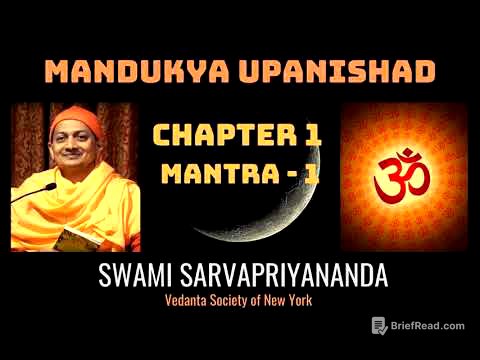TLDR;
Rajasi Nandi returns to The Ranveer Show to discuss Scand, the Hindu god of war, and his re-emergence in India and globally. The conversation covers the concepts of Shiv and Shaki, the role of Kali, the history and significance of Scand (also known as Kartikeya or Muruga), and the differences between the paths of Scand and Gpati. The discussion also touches upon the potential systematic removal of Scand upasana from India, and the importance of fierce deities in navigating tough times. Finally, Rajasi Nandi shares a basic Scand sadhana for viewers to begin with.
- Shiva and Shakti are the primordial beings, Shiva being static knowledge and Shakti being the executive power.
- Kali is a dynamic outpouring from Parvati, a goddess for the destruction of negatives.
- Scand, also known as Kartikeya or Muruga, was once a pan-Indian deity, the general of the gods, and a master of logic.
- Gpati represents an intuitive, organic path, while Scand represents a path of determination and concentration.
- The upcoming years are predicted to be tough, requiring the blessings of aggressive deities like Bhava and Scand.
Understanding Shiv and Shaki [2:06]
Rajasi explains that Shiv and Shaki are the fundamental building blocks of the universe. Shiv represents the static, unchanging aspect of reality, embodying absolute knowledge and detachment. Shaki, on the other hand, is the dynamic, executive power, responsible for creation, activity, and causing events. Together, they are one being in two different poises. Shaki is a projection of Shiva and is present everywhere. There are different types of Shakis, both positive and negative, and spiritual practices help in choosing the ones that aid growth. Parvati is the demure form of Shaki, dedicated to Shiva, while Kali is a dynamic and fierce outpouring from Parvati, focused on destroying negativity.
Kali's Role and the Nature of Shakti [6:30]
To summarise, the universe can be understood as Shiva (pure stillness) and Shakti (energy). Shakti can manifest in various forms, including goddesses like Kali. Kali is an independent deity, a form of Shakti for destroying internal and external negatives. All Shakti revolves around a point of stillness, which is Shiva. Stillness is a depth, and absolute stillness can be disorienting unless one is prepared through sadhana. Kali and other forms of Shakti have different functions in the universe and are worshipped in tantra and across India.
The Pan-Indian Presence of Scand [10:38]
Scand, also known as Kartikeya or Subramani, was once a pan-Indian deity, evidenced by sculptures found across India, including areas now in Central Asia and Afghanistan. Even in Bengal, despite not being as prominent now, Kartika puja still happens, and he is depicted with a bow and arrow, while retaining the peacock as his vahana. The weapons of Scand, whether the veil (spear) in South India or the bow and arrow in Bengal, symbolize his swift power that works from a distance. Activating the astras (weapons) of deities through mantra sadhana is a complex process, and the veil of Scand is considered equivalent to Scand himself, capable of clearing negativity.
The Power and Significance of Kartika [15:11]
Kartika's worship brings a steady power of Mars, helping to control issues like injuries, blood-related problems, and conflicts. He is the general of the gods, born from Shiva's virya (semen), symbolizing pure masculine energy. The story of his birth involves the virya being too powerful for water and fire, eventually being taken up by six matrikas (fierce deities) in a forest called Saravana. Kartika's whole body is of masculine energy, and he carries the veil to destroy asuras. As a general, he can strategize and use multiple astras. Without the veil, he becomes a guru, entering a state of samadhi and adwatam (realization of the Brahman), becoming known as Guha, the cave dweller.
Scand Compared to Shiva and Gpati [22:12]
Scand is a child of Shiva, with his masculine energies directly accessible within creation, making him easier to connect with than the vast and transcendental Shiva. Gpati, on the other hand, is made entirely from Parvati, with Shiva adding only the head, representing a different path of spirituality. Scand's path is one of discipline and determination, aligned with the purusha (masculine energy), while Gpati's path is more intuitive and organic, aligned with the feminine energy. Scand festivals often involve fierce practices, reflecting the masculine practice of concentration and victory.
Characteristics of Scand Upasakas and Tamil Identity [28:38]
Scand upasana brings tremendous intensity and determination to the upasaka, sometimes perceived as arrogance due to the power of Mars. Scand was considered the Vedic equivalent of Vata, protecting children from serpas (snakes), representing lower emotions. The peacock, Scand's vahana, biting a snake symbolizes controlling these negative energies. Tamil Nadu has kept Scand alive, and Rajasi Nandi expresses his love for the state, often visiting Scand temples there. He recounts how he was drawn to Scand, eventually leading him to worship the deity and experience help in times of crisis.
The Potential Removal of Scand Upasana and its Revival [34:49]
The speaker conjectures that Scand upasana may have been systematically removed from India to diminish the "war element" and "edge" from the land. He thanks Tamil Nadu for keeping it alive, allowing it to regrow throughout the country. This is not about being anti-European or anti-imperialist, but about reclaiming the original culture of having a god of war, which is needed in the current geopolitical scenario. Rajasi Nandi broadly agrees, noting that monotheistic cultures often damage vigrahas (statues) in polytheistic cultures. He believes Scand upasana is set to increase, as we need that energy.
The Resurgence of Fierce Deities and Scand's Role [39:32]
Rajasi Nandi explains that Bhava (a fierce form of Shiva) creates the base, leading to Dvi sadhana and Scand upasana. Bhava, once a prominent tantric deity, is seeing an upsurge in worship, which will lead to the others. Scand is seen as a clean warrior who immediately goes into battle. Some old texts mention that Scand killed Mahisasura, typically attributed to Madura. Scand's chief purpose is to defeat asuras and enemies, taking the person into a frenzy. Higher Scand upasana is best done in seclusion, with six-day practices yielding unfailing results. Scand increases mental sharpness, logical ability, and is good for children's protection.
A Basic Scand Sadhana and the Importance of Multiple Deities [46:06]
Rajasi Nandi recommends a basic Scand sadhana to be done on shashi tithis (sixth day of the bright phase of the moon). Light a dya (lamp), have a picture of Scand, and read the Scand ashtarama (108 names of Scand) six to ten times. Offer some sweet food or fruits. For those serious, chant the 108 names at least 12 times. He advises caution in choosing a single name to chant, as guidance may be required. He also recommends a sadhana involving the whole Shiv-Shakti family, including Bhava, Dvi, Scand, and Matara, done on specific days of the month.
Navigating the Upcoming Tough Times with Fierce Deities [53:38]
The upcoming five years are predicted to be tough, with potential crises, wars, and loss of people. This is a time for spiritual growth, as crisis leads to faster progress. The existence of asuras is necessary for change and movement. Rajasi Nandi advises doing more sadhana of fierce forms like Bhava, Dvi, and Scand. For Vaishnavites, Narasimha upasana is recommended. He notes that certain deities like Bhava are awakening strongly and will come as per their will. Omens like deep-sea creatures surfacing and fish washing ashore may indicate difficult times ahead, including potential natural calamities.









